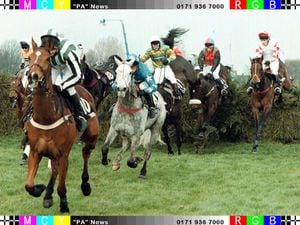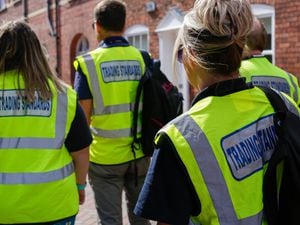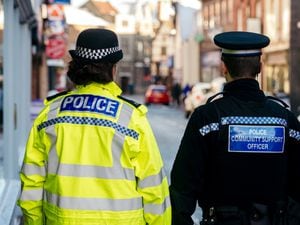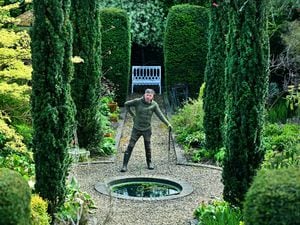Flashback – April 1997
1997

The Grand National of April 1997 was like no other – but when it was finally run, it brought glory to Shropshire in the form of a four-legged hero.
Lord Gyllene was dubbed The Horse The IRA Couldn’t Beat after winning the race at Aintree following a 49-hour postponement caused by an IRA bomb threat.
It had been due to take place on Saturday, April 5, in an atmosphere of heightened tension caused by a spate of security alerts as a result of IRA bombs which had paralysed the Midlands' motorway system, closing parts of the M6 and M5 for two days.
On the big day – it was the 150th Grand National – there were 60,000 spectators ready for the spectacle at the Aintree racecourse, but barely an hour before the runners were due to line up there came the first of two coded bomb warnings from the terrorist organisation.
It led to a mass evacuation and the race being postponed for the first time ever. The threat turned out to be a hoax and when the race was run the following Monday Lord Gyllene landed the Grand National for Shropshire for the first time since the 1930s after outjumping, outstaying, and ultimately outclassing 35 rivals.
Lord Gyllene led from the second fence and was able to dictate the race from the outset, although there was a scare at the water jump at the end of the first circuit when a loose horse nearly took him out.
Jockey Tony Dobbin rode him to victory by an incredible 25 lengths. Lord Gyllene became the first horse since Troytown in 1920 to make all the running in the world’s most famous steeplechase.
It was the biggest winning margin since Red Rum's third win 20 years earlier.
The bookies were left smarting as by the time the postponed race had got under way the odds had moved out from 9-1 to 14-1, with doubters claiming the ground was too firm for him.
His trainer was Steve Brookshaw and after Lord Gyllene’s victory about 100 relatives and friends gathered to welcome the nine-year-old horse back to his stables at Uffington. A banner proclaimed: “Gyllene First, IRA Nowhere”.
Lord Gyllene, who had been brought over from New Zealand to be trained at the stables near Shrewsbury, was not the county's first winner of the Grand National.
In 1928, Tipperary Tim, trained by Joseph Dodd at Blackoe near Whitchurch, went down in the history books as the first 100-1 winner of the race – all the other runners fell.
Shropshire was back in the winner’s enclosure when Forbra, owned by Ludlow bookmaker and councillor Bill Parsonage, won the 1932 running of the great race. Ridden by Tim Hamey, he came home three lengths clear of Egremont who had chased him for much of the second circuit.
Where did that name, Lord Gyllene, come from? At the time of his epic victory owner Stan Clarke, a Midlands property millionaire, explained it was all a mistake, caused by a misreading of handwriting.
"A lot of people have asked me just what his name means," he said.
"There is a place in America called Gyllene and there is a small place in Ireland which is spelt slightly differently.
"But I finally discovered that he was called Lord Gyllene by accident on Saturday night (that is, the night of the postponed race).
"The breeder let us know that he had filled in the form for registration and they wanted him called Lord Cyllene. In 1985 there was a famous stallion in New Zealand called Cyllene and they wanted him named after that.
"When the form came back they had registered him as Lord Gyllene , so the breeder phoned them back and said they had made a mistake.
"They explained that they couldn't read the writing, but then felt it would be bad luck to change the name again."
Lord Gyllene was destined not to race many times, as his career was affected by injury, which led to his retirement in 2001 after a total of only 13 starts which yielded four wins and five seconds.
And although he was never again to race in the Grand National, he was a regular in the parade at Aintree on Grand National day.
He remained with his owner's family and died in December 2016 at the age of 28.





